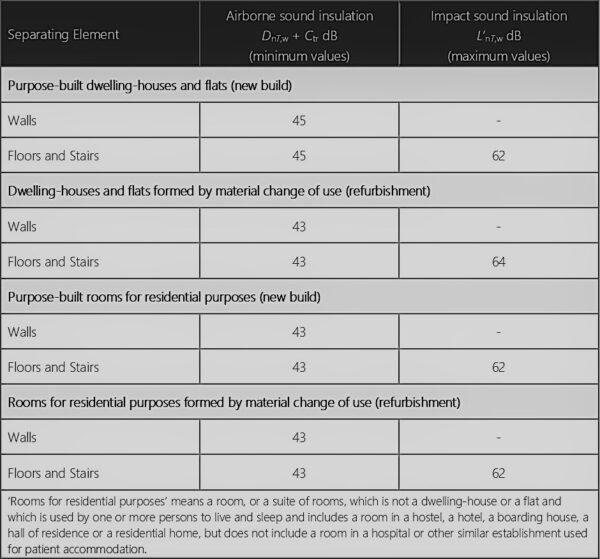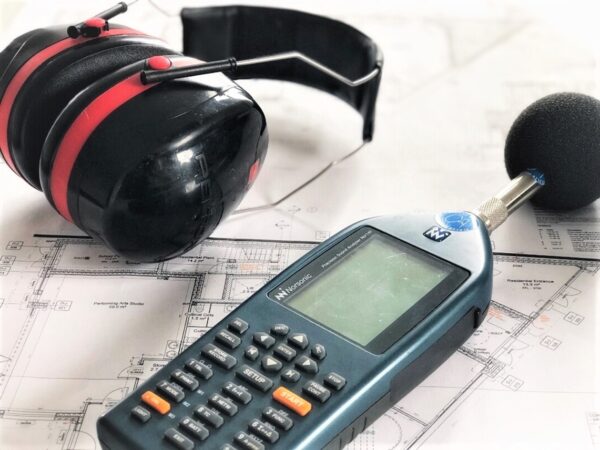Sound Testing Levels Required to Achieve Part E Compliance
The sound levels required to pass your sound insulation testing are usually 45dB for airborne wall and floor and 62dB for Impact sound testing. For converted properties the sound levels change to 43dB for airborne wall and floors and 64dB for Impact sound testing. The following table that shows the minimum required sound insulation levels to pass the sound testing in compliance with Approved Document E.

How many sound tests are required on my project?
All new build properties and conversions require 10% of each party wall/floor construction type to be tested, i.e. if you have 10 flats you would require 1 x 6 pack, this consists of 2 airborne wall, 2 airborne floor & 2 Impact sound tests. However if you have 11 units this would rise to 12 Sound Tests or 2 x 6 pack. If you are complying with code for sustainable homes the standard required may rise between 3-8dB so if you need to comply with more stringent standard, than it’s worth asking us to undertake an acoustic design review. For a small fee you have a peace of mind that the acoustic elements will be robust enough to pass the sound insulation testing.

Do houses and flats require different sound testing?
Apartment blocks often require airborne wall, floor and impact sound tests, whereas terrace houses only require airborne wall tests in-line with the requirements of Approved Document E. If you are unsure how many tests you need to undertake on your project, please reference Building Regulations Approved Document E, as it offers lots of useful information in regards to sound testing on all types of projects.
If you would like more information in regards our acoustic design service or sound insulation testing service, please contact us at: info@aptsoundtesting.co.uk or call Darren Direct on 07775623464. Alternately, if you would like more information on how to prepare for your sound testing please visit our website at www.aptsoundtesting.co.uk or download our sound test checklist.
